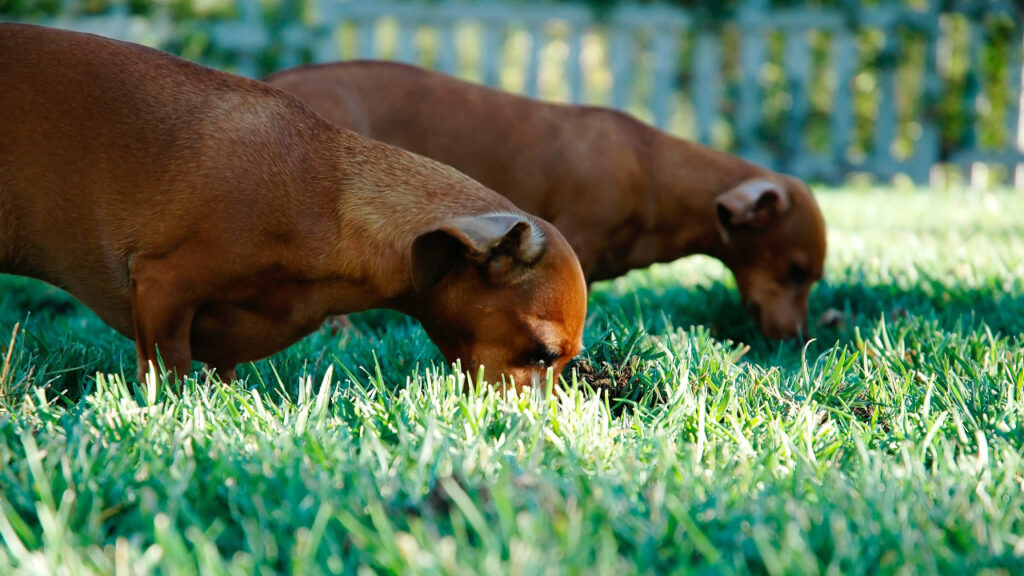Fertiliser safety for cats and dogs

Fertilisers are toxic to both cats and dogs. However, it’s mainly dogs that are affected specifically owing to their scavenging nature.
There are so many types of fertiliser, they generally contain salts of nitrogen and potassium. As well as phosphorus. They vary in the additives, which can include agents to kill plants, insects and fungi, and they can also carry bacterial and fungal toxins. They can be in granules (most common), also liquid or solid forms.
What happens to your dog or cat when they eat fertiliser?
This really does depend on the type of fertiliser (i.e. what exactly is in it), the concentration of the ingredients, and the amount eaten. We know that it’s the dose that makes the poison, so for example, your dog eating the contents of an open bag in the garage is a far bigger problem than if he is scavenging what’s been freshly sprinkled on the lawn (not to say the latter isn’t a problem too though).
Signs that are seen with fertiliser ingestion are usually due to direct irritation of the gut, and include:
- Vomiting
- Diarrhoea
- Salivation
- Lethargy
- Stomach pain
These signs are usually mild to moderate, and with veterinary attention and care they should only last 24-48 hours. Some additives to a fertiliser, or large doses can makes signs much worse.
So, how do you best protect your mates when it comes to using fertiliser?
- Keep them away: it’s best to keep your fur kids inside or away from the area when applying fertilisers right up until the time they’re absorbed into the soil. Always apply to the lawn carefully as per instructions on the bag. In general, keeping them away for about twelve hours is safe (some bags state twenty-four hours).
- Water in the granules: the fertiliser and active ingredients are coated on the outside of the granules and are washed into the soil when it rains or when you manually water it in, leaving just some organic material behind. This means after watering them in or after rain, the active ingredients are in the soil, even though you may still see granules on the surface.
- Keep bags and containers of fertiliser locked away so that there is no possible access for your mate.
Once a product is in the soil, and you’ve followed the instructions on the lawn fertiliser packet along with the wait period for your pet, there should be no significant exposure to your dog or cat, when walking on, rolling in or eating the grass of treated lawns.
If you suspect your mate has ingested fertiliser contact a veterinarian as soon as possible so you can get the best advice about what to do next.